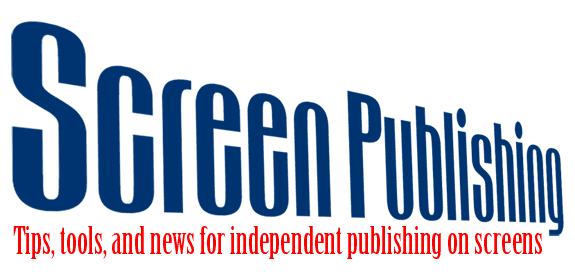#eprdctn Hour Gems
This week’s #eprdctn hour, moderated by @BookDesignGirl, just concluded. The topic was eReader devices and apps and their unique code rendering issues. These are some gems worth remembering:
Misc
@amarie – uses TweetChat to focus on conversations with a certain hashtag
Rendering Issues
@MatthewDiener – “for Kindle/Mobi, @jtallent’s Kindle Formatting points out most of the rendering issues”
@BookDesignGirl – “Edges of the images in my .jpg’s were blurry and the [epub] spec said to change to .gif it that was happening. It did the trick.”
@ BookDesignGirl – “Tally: @camilcloutier uses center tags @NickRuffilo uses CSS not center tags & I’ve used empty span tags to make text center on iBooks!”
@pablod – Previews HTML components of an ePub file in Mobile Safari in the iOS emulator. Note: only good for previewing single pages (not full epub docs) – not a substitute for previewing on an actual iOS device, but in a pinch, it can help.
On embedding fonts
@ BookDesignGirl – “I’ve started embedding fonts. Used http://tinyurl.com/6cw5hoz for current project & it worked fine (knock on wood).”
@pablod – “I had to pull out a div with embedded fonts which was causing a rendering issue at page break for a UL within the div in iBooks.”
@tinahender – “As a a rule, I do not embed fonts b/c licensing issues are not clear. But if a client asked, I would look into it further.”
@pablod – “Alternately, Google.com/webfonts gets around the pesky font licensing issue. Also, theleagueofmoveabletype.com”
@biladew – “embed fonts only when necessary. Otherwise generic font faces should give you what you need (serif, sans-serif, etc)”
@BookDesignGirl – “We don’t embed b/c of licensing/potential validation issues but did for this project. Times font didn’t work for tweens”
@aarontroia – “go to @ebookarchitects bit.ly/lDSNWv and download Font Test, its a really good font embedding example”
On InDesign-based workflows and conversion tools
@MatthewDiener – “ID=>Aptara=>ePUB=>Kindle so far”
@BookDesignGirl – “We do InDesign to ePub (either conversion house or in-house) -> edit ePub -> convert to .mobi -> note conversion issues -> go back to epub and edit in Dreamweaver -> .mobi (repeat)”
@TonyRobertsMN – “Yes, export to ePUB then modify. Nothing Indesign produces on it’s own satisfies me. I edit the HTML manually, then make the .mobi”
@JenniferOmner – “epub -> .mobi -> note conversion issues -> back to epub file for Mobi & edit in Oxyen -> .mobi”
@markerrett – “I did InD to ePub then use Calibre to .mobi it”
@BookDesignGirl – “I convert my epubs with Kindle Previewer.”
On KindleGen
@aarontroia and @jtallent – both recommend KindleGen over Calibre or Sigil
@jtallent – “easy to do in command line. “path_to_kindlegen.exe path_to_opf””
@MatthewDiener – “Once you figure out how to use it from command line/Terminal it is an easy tool, and edit/rerender simple”
@MatthewDiener – “If you need help with KindleGen, instructions on using it are included in this document. http://bit.ly/opHs8W”
@BookDesignGirl – “I assumed that KindlePreviewer uses KindleGen. And then you have the preview right there.”
Zip tips
@tinahender, @aarontroia, and @PenguinPowered – all recommend @danrodneytweets’s epub zip and unzip scripts (also here)
@markerrett – “Plus BBEdit now lets you open HTML inside the ePub with the need to Unzip then zip again.”


